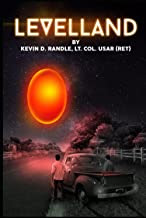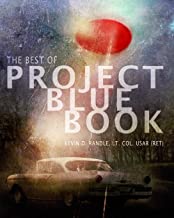This
is a different post than I had planned. After reading James Carrion’s The Roswell Deception, I was planning to
do a short article about one tiny aspect of it. It was something that seemed to
undermine his premise, but as I was searching for additional information, the
tone changed and I made a discovery or two that I thought important.
 |
| James Carrion. Photo copyright by Kevin Randle |
To
bring everyone up to speed on this, let me say, “This isn’t a review of The Roswell Deception. It is an analysis
of a single statement that seems to be at odds with the facts, but it is an
important discrepancy.”
For
those who haven’t read the book, Carrion proposes that the flying saucer craze
of 1947 including the crash of something near Roswell was a grand deception. It
had two purposes. One was to convince the Soviets that we, meaning the United
States, had an airplane that was far superior than anything the Soviets had.
Military strategists had learned during the Second World War that control of
the air was an important part of winning the war on the ground.
The
second was to either expose Soviet spies in the United States, or to gather
through the use of deception, information that would help break the codes that
the Soviet Union was using. In time of war, not to mention during time of peace,
being aware of the other side’s strengths, weaknesses and worries would help in
any sort of negotiations. Knowing the enemy’s goals in advance would help to
blunt them and, by extension, improve our position in the world.
These
were the reasons for creating the aerial deceptions and the activities designed
to keep it going. Carrion believed that the Roswell crash, and more
importantly, the stories around it were necessary for the deception.
With
that in mind, he wrote, “Lieutenant Warren Haught [Walter Haut… I don’t know
why he couldn’t get the name right] delivered two entirely different press
releases to the local Associated and United Press outlets – a purposeful
decision that will make sense later in the story.”
The
most obvious problem is the assertion that there were two different press releases
and that it was purposeful. There is no evidence to support the idea that there
was any sort of purposeful decision here. The evidence suggests otherwise and
here’s why.
Simply,
I have found more than two versions of the press release. There was one version
that appeared on the United Press wire service, one that appeared on the
Associated Press service, and still another version that appeared in The Roswell Daily Record. Many of the
newspapers printed their own versions, rewritten by their reporters or editors
to fit their formats and style.
For
those interested, George Walsh of radio station KSWS was the first to get his
version of the press release on the AP news wire at 2:26 p.m. (MST). It said:
The many rumors
regarding the flying disc became a reality yesterday when the intelligence
office of the 509th Bomb Group of the Eighth Air Force, Roswell Army
Air Field, was fortunate enough to gain possession of a disc through the
cooperation of one of the local ranchers and the sheriff’s office of Chavez
County.
The flying object
landed on a ranch near Roswell sometime last week. Not having phone facilities,
the rancher stored the disc until such time as he was able to contact the
sheriff’s office, who in turn notified Major Jesse A. Marcel of the 509th
Bomb Group Intelligence Office.
Action was immediately
taken and the disc was picked up at the rancher’s home. It was inspected at the
Roswell Army Air Field and subsequently loaned by Major Marcel to higher
headquarters.
Frank
Joyce, at radio station KGFL, followed about fifteen minutes later with the
United Press version. It said:
 |
| KGFL Radio Station in the late 1940s. |
The Intelligence office reports that it gained
possession of the “Dis:” [sic] through the cooperation of a Roswell rancher and
Sheriff George Wilson [sic] of Roswell.
The disc landed on a ranch near Roswell sometime
last week. Not having phone facilities, the rancher, whose name has not yet
been obtained, stored the disc until such time as he was able to contact the
Roswell sheriff’s office.
The sheriff’s office notified a major of the 509th
Intelligence Office.
Action was taken immediately and the disc was picked
up at the rancher’s home and taken to the Roswell Air Base. Following
examination, the disc was flown by intelligence officers in a superfortress
(B-29) to an undisclosed “Higher Headquarters.”
The air base has refused to give details of
construction of the disc or its appearance.
Residents near the ranch on which
the disc was found reported seeing a strange blue light several days ago about
three o’clock in the morning.
The
last of the versions was published by the Roswell Daily Record. It is different
than the other versions. It said:
The
intelligence office of the 509th Bombardment group at Roswell Army
Air Field announced at noon today, that the field has come into possession of a
flying saucer.
According
to information released by the department, over the authority of Maj. J. A.
Marcel, intelligence officer, the disk was recovered on a ranch in the Roswell
vicinity, after an unidentified rancher had notified Sheriff Geo. Wilcox, here,
that he had found the instrument on his premises.
Major
Marcel and a detail from his department went to the ranch and recovered the
disk, it was stated.
After
the intelligence office here had inspected the instrument it was flown to
higher headquarters.
The
intelligence office stated that no details of the saucer’s construction or its
appearance had been revealed.
Articles
in other newspapers, especially those on the west coast, offered variations of
the press releases. The Oroville, California Mercury-Register, for example, reported, “Possession of a ‘flying
disc’ was disclosed today by the intelligence office of the 509th
bomb group of the Roswell army airbase.”
 |
| Walter Haut. Photo copyright by Kevin Randle. |
An
analysis from all these sources show that the same information is the basis for
all of them, but there are subtle differences. This happened, I believe,
because Walter Haut phoned it in, so to speak. Haut told me, as he had many
others, that he wasn’t sure if he had hand carried the press release to the
four media outlets in Roswell or if he telephoned each of them and read it to
them. That would account for the subtle differences, at least partially.
Art
McQuiddy, who in 1947, was the editor of the Roswell’s Morning Dispatch told me (see UFO
Crash at Roswell, pp. 70 – 71; Pflock, Roswell:
Inconvenient Facts and the Will to Believe, p. 266), “I can remember quite
a bit about what happened that day. It was about noon and Walter [Haut] brought
in a press release… By the time Haut had gotten to me it hadn’t been ten
minutes and the started ringing. I didn’t get off the hone until late afternoon.”
On
the other hand, Karl Pflock in his book wrote (p. 244), “Among other things,
they [teletype messages retained by Frank Joyce of the information communicated
by the United Press] confirm Roswell AAF did not [emphasis in original] distribute a written press release on
the Brazel discovery.”
Can
we resolve this?
Yes.
I think the answer is in the subtle differences found in each of the versions.
Had Haut taken the press release into the various offices, then the content
would be virtually the same. The big difference is with the version published
in the Roswell Daily Record. It
smacks of the local newspaper being familiar with the players, the locations,
and the situation. Had they had a printed version of the
press release, their
version would have followed those others with, of course, the local
modifications.
 |
| Roswell Daily Record. Photo copyright by Kevin Randle. |
There
is another aspect of this. As I was looking for copies of both the AP and the
UP versions, I was struck by a thought. I had been given, by Frank Joyce,
copies of the wire service copy from 1947. There were Joyce’s notes written on
it. I wondered, if in the early 1990s, after we’d talked to Joyce, and Moore
had talked to Joyce, if maybe, Joyce had cobbled this together. He would have
been familiar with the style of the news wires in 1947, he had moved from
Roswell radio station, KGFL, up to Albuquerque’s KOB. He knew Haut and the boys
in Roswell, so there was a possibility that he had been able to create
something in coordination with Haut and the others that none of us would challenge.
And,
more importantly, Joyce had told us, that is Don Schmitt and me, that within
the days, possibly hours of the original press release, the military had come
by KGFL and swept the office for any paper or evidence of the crash. Given that
we were hearing about military attempts to suppress the information from a
number of people, that just seemed to be a part of the larger picture.
It
wasn’t until recently that I had another thought on this. If the military had
searched the radio station, why hadn’t they taken the teletype messages that
Joyce had saved. If he had hidden that material, why wasn’t the press release
with it? And, why was the military even bothering with this? The story was out
and the press release, maybe not verbatim, but close enough to the original had
already been circulated so that it was of no importance. We knew, pretty much,
what it said.
Given
all this, I believe that we can conclude that Haut didn’t visit each place, but
used the telephone. Art McQuiddy might believe that Haut visited him, but he
would be wrong about that. When I interviewed Jud Roberts about running into
the military cordon of the area, he told me that there had been a blue staff
car parked by the side of the road. In July 1947, the staff cars would have been
green, given this was the Army. It wasn’t until after the Air Force became a
separate service that the staff cars would have been painted blue. Was Roberts
lying? No, he had just spent decades looking at Air Force blue cars. The point
is that he might have actually remembered the staff car by the side of the
road, but in his mind it was blue.
We
can conclude, then, based on the evidence, based on Walter Haut’s vague memory,
and the information printed in the newspapers, that there might have been a
written press release that Haut read to the media sources over the telephone.
However, if he was working from notes rather than a completed release, then we
can see that there would have been other, subtle differences interjected in the
press release.
As
for the original reason to begin this rather esoteric look at that one
paragraph that Carrion wrote, we conclude that Carrion was wrong as well. There
weren’t two different press releases issued as a way of exposing Soviet spies
or as a means of cracking Soviet codes. There was a single press release,
delivered over the telephone that created the differences. And from that point,
the newspapers updated, edited, and added to the press release meaning that
there weren’t two versions, but many. On this point, Carrion’s theory about two
press releases, fails.

































